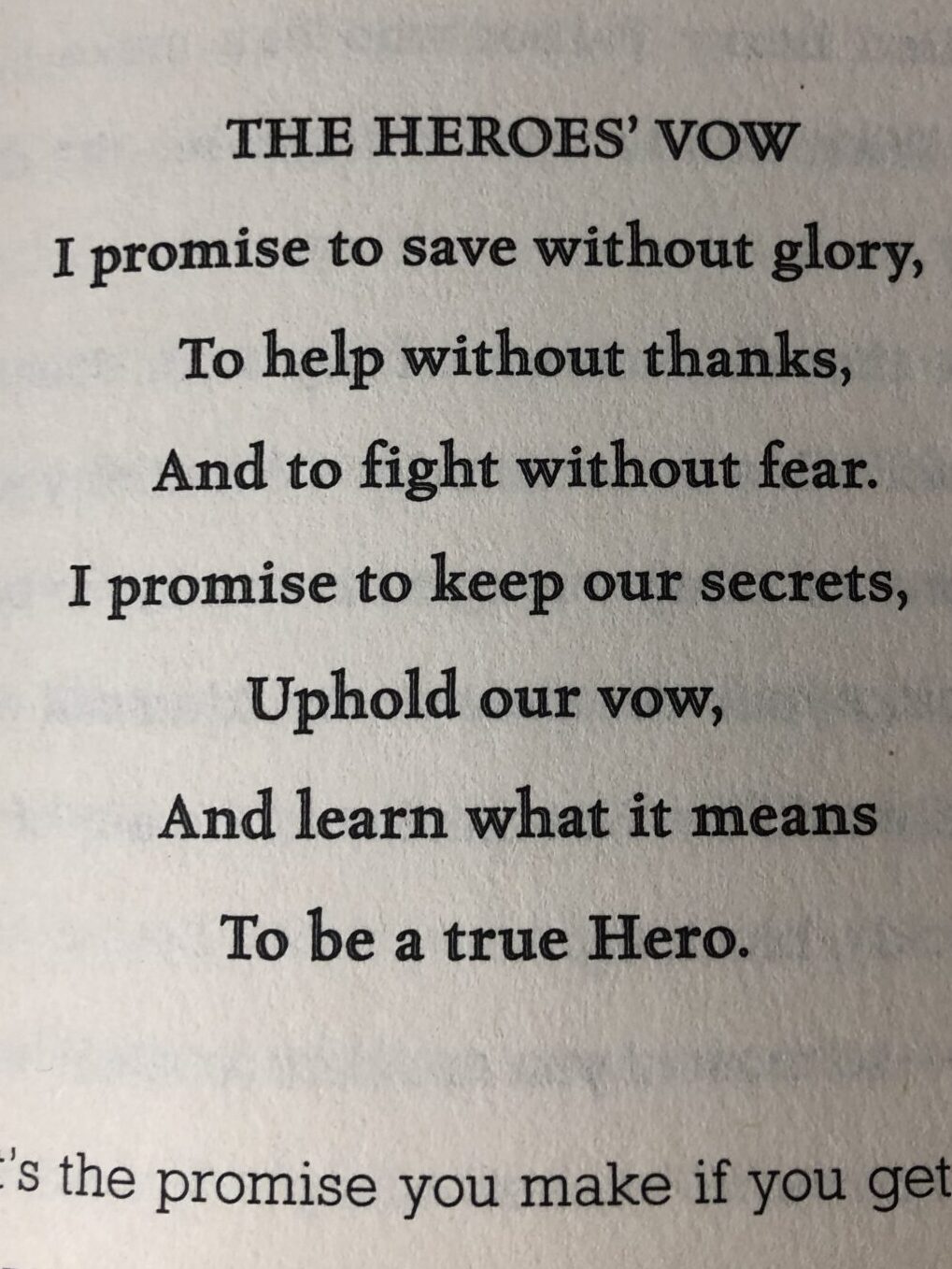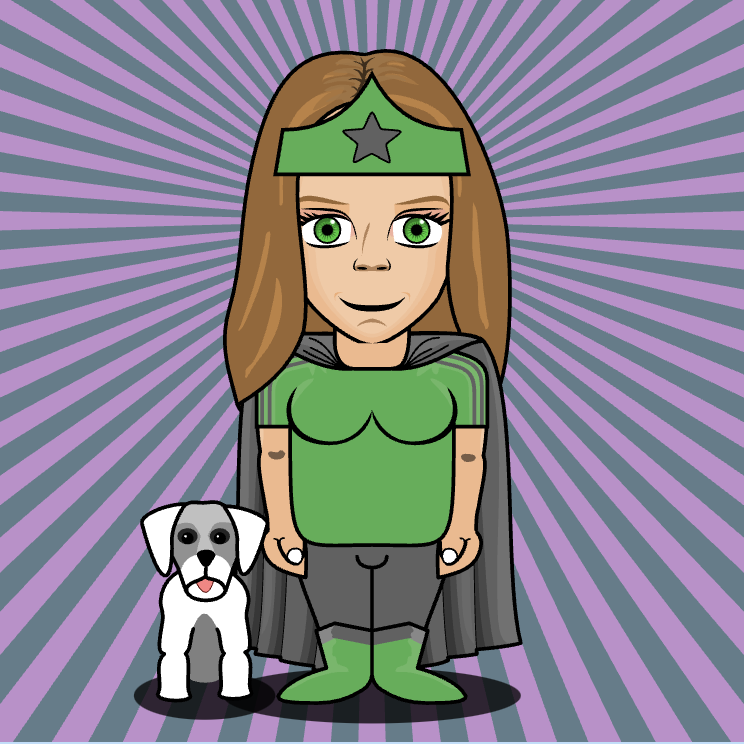
Why I Picked It Up: Last spring/summer, Audible offered a selection of free audiobooks for kids to listen to while schools were closed. We are audiobook junkies (if the car trip will be longer than 10 minutes, we usually have a story playing), and so we listened to lots of them, but Kid Normal was our favorite of them all!
Why I Finished It: The audio version, narrated by the authors, had me laughing out loud so many times! The narrative voice, as well as the narrators’ voices, are a fantastic blend of sarcasm, wit, and a touch of British humor that I just can’t resist. The wild cast of characters is dynamic and quirky, which makes you wonder just how they’re going to pull off the whole “saving the world” thing that usually happens in superhero books. I also loved how the authors poked fun at many of the superhero tropes while still using them in their own stories.
Murph, having just recently moved, finds himself in need of a new school. As the result of a misunderstanding, his mom finds a place for him at The School, which turns out to be a place for kids with superpowers, or capabilities, to learn how to use them or hide them. Murph doesn’t exactly fit in since he’s the only “normal kid” at the school, until he bands together with a group of other students whose superpowers are unconventional and not seen as particularly useful. The Super Zeroes, as they come to be called, are the targets of ridicule from faculty and more capable students alike.
When a science-experiment-gone-wrong creates super villain Nektar (part man, part wasp), and those with more traditional superpowers are enslaved by Nektar’s mind control, it’s up to the Super Zeroes and Kid Normal to save the day.
Who I Would Give It To: Fans of the 13-Story Treehouse series, Kid Spy, Double Trouble, Ungifted, and David Walliams. It’s a funny, fast-paced middle-grade novel, rich in plot and character, that would be great as a read-aloud or an independent read.
Integration Ideas
Theme – Identity and Friendship
Murph’s discovery of identity is captured in the title – Kid Normal. What starts as a derogatory term, meant to isolate him and highlight his lack of significance, actually ends up being his superhero name! He goes from feeling completely inadequate and out of place to confidently leading the Super Zeroes and embracing his “normalness” as an asset.

The process of discovery is aided by a group of great friends that have learned to work together. They learn to leverage each others’ strengths and help compensate for each others’ weaknesses as they work together towards a common goal and against a common enemy. The Super Zeroes are a great example of teamwork and collaboration, as well as friendship.
Essential Questions:
What dilemmas arise when others view us differently than we view ourselves?
What parts of our identities are determined for us by other people or by society?
What is community? How are decisions made about who belongs and who is excluded?
Figurative Language – Similes
There are some fabulous similes in this story. As you read them in the story, put one on the board. Ask students what they notice about the sentence. Hopefully they notice a lot! It starts with a capital letter, ends with punctuation, has a verb, etc.
Eventually, if they don’t get there on their own, direct them to the “like” or “as” word. Ask them what the word is doing and lead them to a discussion of how it is comparing two unlike items. In the first example below, the word like is comparing Mr. Flash moving in the class to a tornado. Have a lengthy discussion – after all talk teaches! Is he really a tornado? Why did he compare him to a tornado? Then act out what that might look like.
- “SILENCE!” roared Mr. Flash, zipping around the class like a red-tipped tornado, trying to restore order. – p 45
- Actually, Nellie was dressed as if all her usual clothes were in the wash. – p 34
- It sounded like…well, it’s difficult to describe what it sounded like. It sounded like someone was pressing five thousand notes at once. It sounded like a musical nosebleed. It sounded like a really fat otter had scurried across the piano keys on its way to an otter party. – p 90
- His face was red, and not just because there was a significant amount of tomato sauce dripping down it like savory magma from an erupting volcano. p 162
- Before Murph knew it, a meaty hand had plucked him out of the coats like a claw picks up teddy bears in one of those carnival machines. p 188
Character – What does it mean to be a hero?

Before you start reading, check out the Heroes’ Vow (p 95). Take some time to talk through it with the students. According to this vow, what kinds of characteristics do heroes have? What does it mean to “save without glory”? What would that look like? Can we think of other examples of people in other stories or in our own lives that have done that? What words would we use to describe that person? (Stumped for vocabulary? Try our Character Trait Cards!) Go through each of the lines of the vow and see if, as a class, you can “learn what it means to be a true Hero.”
Then, as you read, look for examples of those traits in characters throughout the story. Add text evidence for your class definition of “true Hero”! Students could choose a character to follow through the story and determine if they are or are not a hero.
After you read, make a list of characters and decide if that character is a hero based on your definition and what you added from the story. It could turn into a debate, or at least a fun class discussion! Ask open-ended questions like: Do you need to meet all the characteristics to be a hero? Can you become a hero over time? Could you ever lose hero status? Are you happy with the Heroes’ Vow the way it is? How would you modify it? What would you add to it?
Then, create your own superhero! Some of the heroes in this story have some bizarre powers that might not initially strike you as hero-like or even helpful (ex. one character can make soup appear on command). Have students determine what main superpower their hero would have and what they would look like. Be sure to include any limitations or rules for using the superpower, and be creative! Have students create a character card to display their hero.

Create Your Own Superhero Tools:
- http://heromelab.com/lab – Simple, easy-to-use tool to create a superhero from a limited set of pre-determined characteristics.
- https://www.marvelhq.com/create-your-own-super-hero – Very detailed tool to customize a superhero from the Marvel Universe. Note: If students are too familiar with these characters, they may not be able to create their own superhero.
- https://learnenglishkids.britishcouncil.org/games/style-hero – A structured tool to create a superhero with a few more options than heromelab. Students can create and then print as a coloring sheet or a poster. Note: The base characters already have personalities, and the tools and options come with descriptions, but students could just create their hero based on looks alone.
- https://superherotar.framiq.com/en/build/ – This one might be my favorite! There are lots of options and you can customize just about any part of the avatar. There are some recognizable costume pieces, but you can definitely create a one-of-a-kind superhero with this one. Note: this one does have ads that sometimes covered up the buttons to page through the options. Just wait a few minutes and the ad will change sizes so you can click through.
Optional (but super fun!) Extension Idea: Randomly select five hero cards and have those five students write a story about how their heroes work together to save the world from an evil villain!






Leave a Reply